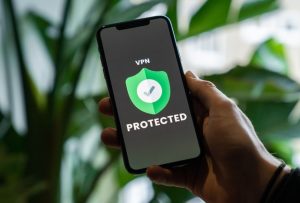As the world continues to move towards a more remote and hybrid work environment, it is important to be aware of the potential cyber security risks that come with this new way of working. In this article, we will discuss some of the most common cyber security risks for remote and hybrid workers, including phishing, malware, data loss, and unsecured Wi-Fi networks. We will also provide tips on how to protect yourself from these threats..
Phishing
Phishing is a type of social engineering attack in which cyber criminals attempt to deceive victims into handing over sensitive information or installing malware. It involves sending emails or other messages that appear to be from a legitimate source, but are actually malicious. These messages often contain links or attachments that can install malware on the user’s computer. Email phishing is the most common type of phishing, and it has been in use since the 1990s. Hackers send these emails to any email addresses they can obtain, attempting to trick victims into clicking on malicious links or downloading malicious attachments. Another mobile device-oriented phishing attack, SMS phishing uses text messaging to convince victims to disclose account credentials or install malware.
To protect against phishing attacks, businesses should educate their employees on how to recognize and avoid them. Employees should be aware of common signs of a potential scam such as misspelled words and suspicious URLs in emails and text messages. They should also be wary of any requests for personal information such as passwords or credit card numbers.
Phishing attacks often result in the theft of user data such as usernames, passwords, financial information and other confidential data stored on computers and mobile devices. Businesses must take steps to protect their networks from these types of attacks by implementing strong security measures such as two-factor authentication for all users.
It is important for businesses with remote workers who access company networks via unsecured Wi-Fi networks at home or public places like coffee shops and airports to take extra precautions against potential threats posed by cyber criminals targeting remote workers through phishing scams.
Malware
Malware is a catch-all term for various malicious software, including viruses, adware, spyware, browser hijacking software and fake security software. It can be installed in a variety of ways, such as through email attachments, drive-by downloads or by clicking on links in malicious websites. Malware can steal sensitive data; alter or hijack core computing functions and monitor end users’ computer activity.
Rootkits are also used to conceal other malware and spread through shared drives. To protect against malware attacks businesses should ensure that their employees are using up-to-date antivirus software and regularly scanning their computers for any malicious software.
Data Loss
Data loss is a common cyber security risk for remote and hybrid workers. It can occur when data is accidentally deleted or lost due to hardware or software failure, viruses, physical damage, formatting errors, intentional destruction or unauthorized access. To protect against data loss, businesses should ensure that their employees are using secure cloud storage solutions and that they are regularly backing up their data. Data Loss Prevention (DLP) is a set of tools and processes used to ensure that sensitive data is not lost, misused or accessed by unauthorized individuals. DLP solutions can help detect potential threats before they become an issue by monitoring user activity and alerting administrators when suspicious behavior occurs. Additionally, businesses should educate their employees on the importance of cyber security best practices such as avoiding unsecured Wi-Fi networks and being aware of phishing attempts. Finally, companies should invest in malware protection software to prevent malicious programs from infiltrating their systems.
Unsecured Wi-Fi Networks
Unsecured Wi-Fi networks are a potential security risk for remote and hybrid workers. These networks can be easily accessed by anyone, allowing malicious actors to gain access to a user’s data. To protect against unsecured Wi-Fi networks, businesses should ensure that their employees are using secure, encrypted Wi-Fi networks whenever possible. Also, the recent explosion of free, public Wi-Fi has been an enormous benefit for many people but also presents new risks that must be addressed.
If you connect to an unsecured Wi-Fi network and send information through websites or mobile apps, someone else might be able to see it. Here are some ways to safely use public or open wireless networks:
- Avoid accessing sensitive information such as banking details while connected to an open network.
- Ensure your device is up-to-date with the latest security patches.
- Use a Virtual Private Network (VPN) when connecting from public places.
- Be aware of what type of connection you’re on – look out for “open” or “public” in the name of the connection.
- Check if HTTPS is enabled on any website you visit – this will encrypt any data sent between your device and the website server.
In addition to the risk of snooping and data breaches, threat actors can use unsecured wireless networks as a point of vulnerability to gain access into other systems on a corporate network. Aside from devices themselves being vulnerable due vulnerabilities in web applications and related software for IoT devices can lead compromised systems if not properly secured with strong passwords or two factor authentication methods.
Conclusion
The transition to remote and hybrid work models has created a new set of cyber security risks that businesses need to be aware of. In this blog, we have explored some of the most common cyber security risks for remote and hybrid workers, as well as how businesses can protect themselves against them. By educating their employees on how to recognize and avoid these risks, businesses can ensure that their data and networks remain secure.
The hybrid model creates its own unique set of security challenges. Companies need to be aware of the potential vulnerabilities associated with cloud migrations, increased workloads, vulnerable networks, access irregularities and more. To mitigate these risks it is important for companies to implement best practices when working from home or remotely such as using strong passwords, two-factor authentication (2FA), encryption software and other measures. Additionally granting remote access from company networks for hybrid work increases the risk of data breaches so companies must know what to look out for regarding common cyber threats such as phishing attacks or malware infections in order to prevent them from occurring in the first place.
In conclusion, it is essential that businesses understand the potential cyber security risks associated with transitioning into a remote or hybrid work model in order to protect their data and networks from malicious actors. By educating employees on how they can recognize these threats while also implementing best practices when working remotely or at home will help ensure that your business remains secure during this transition period..




Be First to Comment